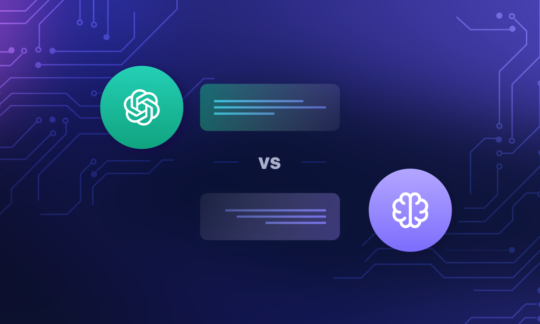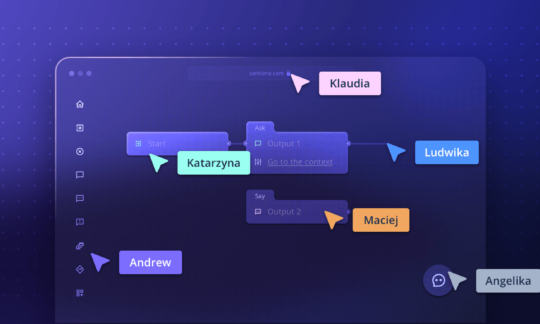The potential of virtual assistants in healthcare
Table of contents
- ‘Someone will be with you soon.’
- That’s where chatbots come to the rescue.
- Chatbots in healthcare can improve… everything?
Most internet users might consider AI bots marketing tools or entertaining distractions. Some might get excited about innovative campaigns such as National Geographic’s Albert Einstein chatbot. Others follow Meta’s BlenderBot as it surprises the public with its love for K-Pop and disdain for Mark Zuckerberg.
But the future of NLP (Natural Language Processing) technology is a serious issue. In the early days of the COVID-19 pandemic, the WHO Health Alert chatbot reached over 12 million people via WhatsApp, Facebook, and Telegram. It provided essential information on coronavirus prevention when traditional channels were overloaded. The potential of AI chatbots in healthcare was already long known, but 2020 proved they save lives in a crisis.
With forecasts predicting significant medical virtual assistant market growth over the next decade, let’s look at the most promising applications of these tools in healthcare.
‘Someone will be with you soon.’
One of the most common ills of healthcare we experience is waiting in lines, on calls, or for a visit. We often wait, and sometimes, when we do, we wonder: do I even need to see a physician? Is my condition dangerous? Should I just lie down and rest? I just need a simple question answered, but all the information I found online needs to be clarified.
Relying entirely on human workers requires every query to be addressed by a professional. While necessary in many cases, it might become a nuisance and waste of a limited workforce in others.
According to a UN study, by 2050, one in four people in Europe and North America could be over 65. An ageing population will increase the workload for healthcare providers as more patients require better efficiency.
Many institutions implement IVR (Interactive Voice Response) solutions to improve the workflow, but their functionality still needs improvement. They require patients to suffer through lengthy keypad menus. Their ability to refer the caller to the proper department relies on predefined paths. Eventually, patients still end up waiting or bouncing between calls, depending on the availability of workers.
That’s where chatbots come to the rescue.
Voicebots/chatbots have many advantages over the old IVR systems. The crucial one is their understanding of human language. They understand questions and, if properly trained, can answer them accordingly. Also, they can instantly access and read databases and create new entries without asking the customer to wait.
Streamlining customer service might be the most common use of chatbots in healthcare. A single voicebot can handle large call volumes, is available 24/7, and can handle almost any task that a human worker can. Furthermore, it allows employees to step away from the reception desk and focus on more practical and less mundane work.
The same AI bot can simultaneously service customers who prefer contact via the company’s website or social media. It is a crucial feature when a constantly growing demographic of Gen Y and Gen Z prefers texting over calling.
Scheduling…
Chatbots can interview patients, instantly access their medical history, find them a proper physician, and schedule an appointment. Want to reschedule? No problem. They can issue appointment reminders and manage prescription medications.
Authorising…
With instant access to the provider’s database, virtual assistants can handle patient authentication much more quickly than their human counterparts. It goes beyond the standard ‘what’s the maiden name of your mother’ question-based verification. AI brings new solutions in biometric identification to the table, such as voice recognition. It allows the voicebot to confirm patients’ identities with one hundred per cent certainty.
Answering…
Medical chatbots’ 24/7 availability is particularly helpful in answering patients’ questions. Health emergencies can happen anywhere and anytime, and providing quick and handy answers can save lives. Chatbots can also quickly dispel the doubts of an anxious patient, provide information about generic and prescription drugs, or educate on disease prevention.
Such potential can benefit doctors as well. Voicebots such as Suki can even automate taking notes and filling the paperwork. The ability to get instant answers on a patient’s history, medication, or allergies would make physicians’ jobs easier. And it could prove crucial in an emergency room, where every second matters.
Chatbots in healthcare can improve… everything?
Chatbots are currently changing businesses worldwide and for good reasons!
Cutting costs
Using AI, we can minimise the time patients spend waiting on calls. Automatically renewing prescriptions and answering many common questions can significantly reduce queues. With such a scope of automation, healthcare providers can decrease costs and redirect workers to improve patient care.
Virtual assistants can interview patients in advance and then pass relevant data to doctors. They can help with the paperwork. All of this shorten visit times and further improves efficiency while cutting costs.
Scalability
AI chatbots and voicebots adapt to the growing call volume and web traffic without adding to the cost. That makes them reliable in times of crisis or rapid growth. Their functionality can expand, and they can learn new things as patients’ and providers’ needs change.
Check our guide to learn more about the flexibility and scalability of AI chatbots.
Always looking after patients
Chatbots’ functionality is not limited to assisting patients on-site. AI bots can integrate into customers’ device calendars to remind them about appointments. They can supervise chronically ill patients or monitor convalescents’ recovery by automatically inquiring about their health. If any reported symptoms were concerning, the AI could suggest and schedule additional consultations.
Patients can contact the chatbot themselves, as they would reach out to clinicians whenever concerned about their condition. Because AI remembers customers’ details, it quickly provides them with relevant advice and helps measure the severity of the situation.
Introducing intelligent solutions like these improves patient care and enhances the quality of the customer’s experience. More so since health chatbots can integrate seamlessly into popular messaging apps like Messenger or WhatsApp. Healthcare providers can’t afford to stay behind because people are increasingly likely to contact companies and institutions via messaging.
What’s the catch?
Well, there isn’t one — at least not necessarily. It’s just that when you automate customer service in healthcare, your AI will need to process large amounts of sensitive data.
And this will inevitably raise some…
Privacy concerns
To properly do its job, a virtual medical assistant needs access to patients’ personal information, possibly their medical history or insurance status. Passing on medical or financial data to the chatbot creates obvious security risks.
Identity proofing is one of these vital concerns. Healthcare provider needs to ensure that only authorised people can access the protected data. It has to be equally secure from data theft and nosy employees. Biometric authentication solutions such as face/voice recognition improve security on the one hand but require a perfectly secure hosting of even more sensitive data.
Let’s not forget that NLU algorithms constantly learn from their previous interactions. And to do so, they need proper storage of conversation transcripts. These need to be anonymised, sanitised from irrelevant personal information, and, you’ve guessed it, securely hosted.
Cloud vs on-premise hosting
Nowadays, there are two ways in which a chatbot’s AI and the necessary data can be hosted: on-premise or with cloud computing.
On-premise means that the company hosts the data. That requires proper hardware and maintenance, which can be expensive. On the other hand, it offers better reliability, security, and complete control and ownership of the data.
Cloud computing means that a third-party server stores the data. It significantly lowers costs and allows for quicker deployment and convenient scalability. Unfortunately, it muddles the status of ‘who owns the data’, makes you dependent on a third party, and creates considerable security risks.
Recent studies show that almost 98% of companies experience cloud security breaches. And security breaches are something you’d like to avoid at all costs when handling your customers’ sensitive information.
Legal pitfalls
The Internet is an increasingly complex environment in scope, technological advancement, and legal regulations. Chatbot’s data processing policies need full compliance with regional data protection laws such as GDPR in the EU or HIPAA in the US. A chatbot must follow its privacy policies if it integrates with a third-party platform. That’s easier to ensure when the company maintains control and ownership over data.
To summarise:
To fully benefit from AI bots in the healthcare and medical industry, you must handle lots of sensitive data. To protect your customers, reputation, legal safety, and revenue, you need to store that data in a secure and reliable place. And that means on-premise hosting.
SentiOne specialises in on-premise deployments, which gives enterprise companies the highest security and control. Furthermore, our solutions are fully compliant with the GDPR.
So, try it out
Here at SentiOne, we aim to build bots that understand natural spoken language the way humans do. Thanks to access to large datasets from social listening and a dedicated R&D team of AI engineers and linguists, our SentiOne intent detection engine achieves an accuracy of 94%.
With a vast library of critical phrases and intents for the healthcare industry, we are creating a dedicated NLU engine for virtual medical assistants. If you’re interested in implementing chatbots in your healthcare facility, look no further. SentiOne Automate will help you utilise AI potential and build a chatbot fully tailored to your needs.
Learn more about the SentiOne Automate or talk to us if you want to try it out.



